Following Richard Simmons’ death in July at 76, I was contacted by Terrence Tullgren, an old friend and business partner of Richard’s. He had come across a series of articles I wrote about Simmons a year earlier—if you haven’t read that four-part series yet (Simmons' life up until 1975; his 1972 jewelry line; the design of his first gym, Anatomy Asylum; and his 1980s “plus size” activewear line), I would advise you to go back and read at least the first two as they lay the background for this newsletter.
Terrence Tullgren was Richard’s partner in Simpatico, the jewelry company I wrote about in the second newsletter. Now an interior designer based in Miami, Tullgren and I spoke on the phone in August, chatting about Richard and clearing up the reality of his pre-fame life.
While researching my first piece on Richard, “The Creation of Richard Simmons,” I continually found that stories, facts, and timelines did not line up. I wrote:
“I spent a long time sorting through and writing about the inconsistencies in Richard’s stories of his late teens and early twenties. Repeating these stories over decades, the timelines and events expand and contract and shift—what appears to be the truth is directly contradicted in a later interview. Memory is inherently fallible and exaggeration tempting, but the continuous irregularities gave me pause. There were larger events he spoke of often (like his trip to Italy) that I could find no proof of beyond Richard’s tales—with him providing many varied reasons for it (med school, art school, foreign exchange student) and many different jobs had while there (“fat model,” Fellini extra, star of commercials, fashion illustrator) in a seemingly brief time-frame, the veracity of much of his narration came into question; even his 1999 memoir, Still Hungry After All These Years: My Story, proved to retain this pattern of irregularities (for example, giving multiple different dates for one event). With Simmons, facts and memories are fluid—Richard Simmons’ has been in a continual state of self-creation since the late 1960s.”
In that newsletter, I tried to piece together a biography of his early years, from birth through the opening of his first exercise studio—as Richard told different stories over the decades, spinning out varied tales depending on the audience or era, it was difficult to decipher fact from fiction. There were things I assumed were true due to the frequency they were mentioned, but my conversation with Terrence threw everything into doubt. Who was the real Richard Simmons?
Terrence first met “Richard at an acting class, Florida State University, 1970… [He] performed an extraordinary skit on Marcel Marceau… He arrived in full makeup and wardrobe, and all of us were beyond impressed by his brilliance. We all thought this is one incredible actor.” In Richard’s retelling of this time in his life, he went with FSU on an exchange program to Florence, Italy, in 1968, and stayed there until his number came up in the December 1, 1969 draft lottery, when he moved to New York City. When I asked Terrence about the inconsistencies, he said, “That's nonsense… I can't remember if it was in spring or fall, but he was a senior, I was a junior. That's the truth. He was in Florida State in 1970. He graduated in 1970 and then he went to LA.” Terrence confirmed that FSU did have an exchange program in Italy, so it is possible Richard went for a semester. Still, it is unlikely that he lived there for several years, modeling and acting in Fellini films as he told the press.
In his memoir, Ricard wrote that he arrived in Los Angeles in the summer of 1972, after living in New York and on the road as a traveling beauty salesman for Coty and Dina Merrill Cosmetics. According to Terrence, Richard would have moved to LA around 1970 to work for Coty; he followed in 1971. “I got in the garment industry just the first day I arrived in LA by happenstance. That was odd. Then, boom, and all things changed,” Tullgren recalls, “I studied American studies. I wanted to be an ambassador, for God's sake. A friend of my father's said, ‘Forget it. You don't have the connections.’ Literally what happened was I went to LA. I went to the LA Mart to see my sister's roommate from college. I was walking the hall trying to find her. This guy grabbed me and said, ‘Do you want a job?’ I said, ‘Well, I don't know anything about the garment industry. I majored in American Studies, Marketing and Spanish.’ ‘Don't worry about it. We’ll give you a car and a great salary.’” Terrence became the West Coast sales manager of Plain Jane, later known as Esprit.
Plain Jane was founded by Jane Tise and Susie Tompkins. As Terrence remembers, “At one point, Plain Jane featured its winter collection in pastel colors, which was odd because holiday colors were normally darker.” Susie “designed these pastel sweaters that were beautiful. That was her first foray in design because Jane Tise always did the designing.” Tullgren paired the pastel sweaters with very in-season blazers and “thought if there's something on the lapel to tie the colors together, it would be more cohesive because it doesn't make any sense having those pastels under a blazer.” Around that time, Terrence’s sister ran into Richard and they reconnected. Terrence told Richard his idea “and that I needed help because I was working full time at Plain Jane. He was all in… Richard and I came up with the Simpatico Designs and colorations of the pins to work with the holiday colorations that were trendy. I told him I had to keep a low profile so I wouldn't get fired, so we decided to do most of the press in his name. I was friends with many fashion writers, so we were able to get featured in newspapers and fashion publications. Eventually, we hired a PR agent to garnish more press. We found a showroom in the LA Mart, Ralph Millen Associates, that would sell the pins.”
Since Richard had majored in art at the University of Southern Louisiana and Florida State University, he illustrated the press releases. Simmons’ illustrations for Simpatico are perfectly in keeping with early seventies style—a Biba-esque girl, sharply defined eyes and lips framed by a hat, its wide-brim decorated with one of Simpatico’s enamel pins. Terrence told me that this wasn’t Richard’s normal style. He recalled, “He drew like [Aubrey] Beardsley, super detail. I wish I had something because he really was intricate in his drawings.”
At the time, Richard didn’t have a car so Terrence bought him a Volkswagen Karmann Ghia; “…it was a stick shift, and I had a riot trying to teach him how to drive. It was a disaster.” Terrence lived at the home of actress Yvette Mimieux’s mother in Hollywood, while he believes Richard was living in West Hollywood. Their days were spent separately—“I would get up super early. I'd go to the factory on LA Street, and then I'd go to Plain Jane and then come back… the pins were stored in the basement of Mrs. Mimieux's house. He'd go over and package everything up and do the invoicing and whatever. We didn't really do a lot together because I was swamped, and then I would exercise, which he wouldn't do.” Yvette Mimieux would become like a sister to Tullgren; they were close until she passed away in 2022.

By the time they met, Richard was thin. Terrence is unsure to what extent he was ever fat; Richard’s memoir includes only one photo of him heavier, but as it is a close-up it is impossible to get a sense of his body. As I wrote in my first and second newsletters on Simmons, in Still Hungry After All These Years: My Story, he says that he “lost over a hundred pounds while in Italy in 1969 and kept it off when he returned to America early the following year. Due to the series of events that happened when he arrived back in the US and how they happened (working at an ultra-fashionable restaurant, a top customer hiring him as a beauty consultant, and successfully touring the country selling cosmetics), I believe that it is more likely that he did have his major weight loss in Italy, versus in 1972 in Los Angeles” as he proclaimed in a LA Times interview about Simpatico.

Tullgren was aware that Simmons was saying untruths to journalists during conversations about Simpatico—using the time to spin out tales about being a fat model and acting for Fellini in Italy—but “I couldn't afford to be fired and interfere in that, but I was reading some of the things he was saying. I went, ‘Oh my God, that's just…' He would exaggerate. That's what made him famous. He was like all over the top.” It wasn’t just to journalists that he would make a scene. Terrence remembers, “When Richard would visit the LA Mart [where Plain Jane and most of LA’s garment industry was headquartered], it could be wild. One time we were in the elevator, and he had a Robin Hood hat, a felt hat with a feather that was a foot long, and he was tap dancing, and the feather was hitting people in the face. As we left, I said, Richard, ‘I work here. Can you please tone it down some?’ I soon learned that was never going to happen. Richard had funny idiosyncrasies like he would take a tablespoon and turn it around and use it like a mirror and fluff up his hair in public. You never knew when any of these foibles would pop up and inevitably make people laugh.” When Richard’s mother—a former fan dancer—came to visit from Louisiana, he found they had very similar personalities: “I remember going to Monty's with her.. and she was just like a carbon copy of Richard. She was a little bit eccentric and fun.”
As I detailed in my earlier newsletter, Simpatico worked with Rudi Gernreich on pins for his spring/summer 1973 collection, shown on October 17th, 1972. Tullgren remembers that Gernreich heard about their pins and approached them, asking for unique colorations to go with his designs: “Black and white, red and navy, red and green, chartreuse, and chocolate brown.” While he was originally unsure about putting the pins into production, he did it anyway; Terrence recollects, “Richard and I thought this was really going to boost our business, but it didn't. I was so excited that I produced way too many pins that I ended up storing at my house for years.” At one point, Gernreich came to Tullgren's for dinner with Simmons acting as chef: “It was hysterical watching Richard take a syringe, fill it with cream so he could insert it into peas and make hors d'oeuvres. At this point, I realized his unique talent in cooking.”
Around this time, Tullgren was hospitalized. Richard and another friend came to visit him in the hospital, where he was handed “the most beautifully written letter that I've ever received and I've kept to this date. He eloquently expressed his gratitude for our friendship, aspirations for our business, and a speedy recovery.” In this letter, Simmons writes of their work together on Simpatico, “I know our good efforts and hard work will merit success. We will be an example to those just starting business with initiative and a smile, and also to those already in business who forgot how to be generous and loving through their self-greed.” He continues on, highlighting the depth of their relationship: “Our bond in business and life will grow strong. We have helped each other in God knows how many ways and will continue. For we are gonna help to make the world a greater place.”

The pins for Rudi Gernreich had used the same shapes as their first collection but in different colorations—now they needed to come up with new ideas. Tullgren’s sister was now living in Europe, working in fashion, so he sent Richard over to shop and look for ideas. “While he was gone, I went over the bookkeeping that he was doing and found out how much money I was losing. We were making sales but hardly enough to sustain a business,” Terrence recalls. “When he came back from Europe, I have to tell you, I was just so angry because I'd never gone through the books. All my money that I was making from Plain Jane, I was losing. I was furious when I went through the books.” After traveling all around Europe on Terrence’s dime, Richard’s only proposal was to make pins shaped like anatomical body parts. For Tullgren, this was the beginning of the end: “I was just like, ‘You went to Europe and my sister's over there.’ She had a buying office between Paris and London, I'm thinking, and this is what you discovered shopping the stores or the trends? A heart? An anatomical heart, no less, and a rib cage and a uterus? I said, ‘That's it.’”
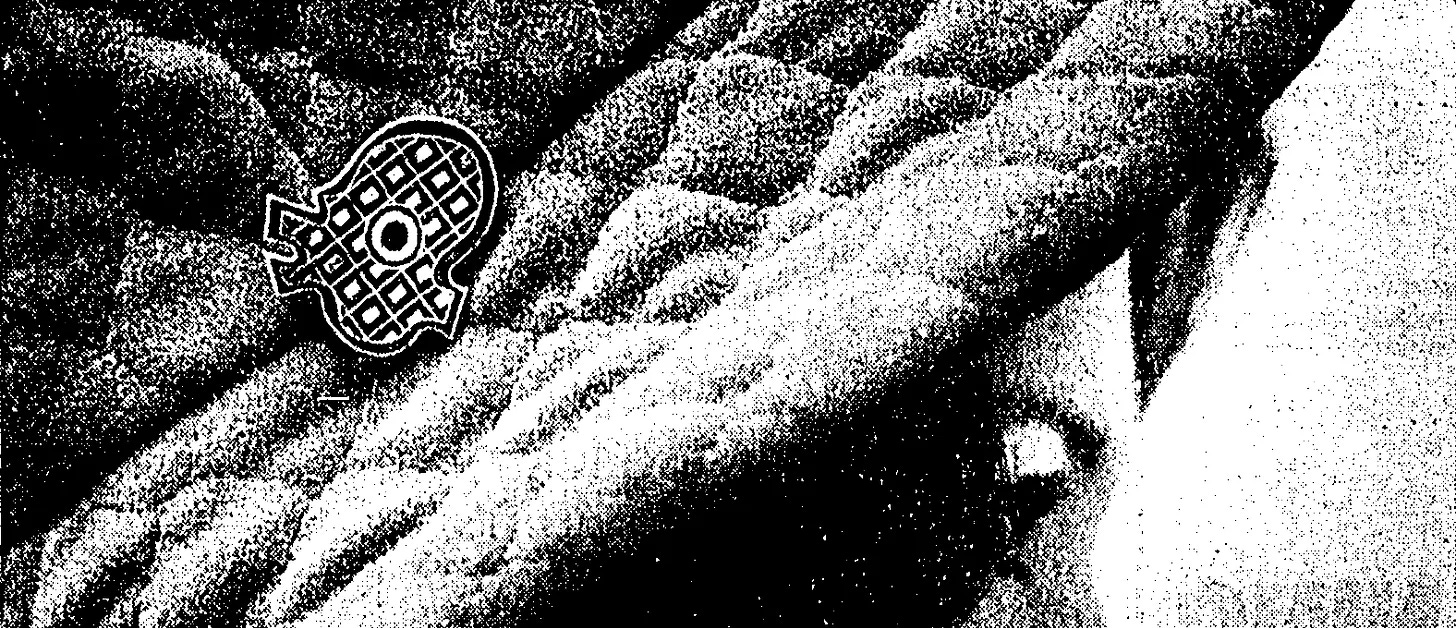
As Terrence was losing so much money, he asked Richard to work in a new store he was opening in Topanga Canyon. “Richard named the store, ‘If It Fits, Wear It,’ and designed the interior and worked there for a while.” The store sold samples from Plain Jane and other lines that Terrence worked with. As he remembers, Richard “was in the store a lot, which I'm sure he hated because he was there alone, not being able to entertain…” According to Terrence, after working at the store, Richard began waiting tables at Derrick’s, a restaurant that opened in Westwood in late 1972 (I discuss Richard’s time there in Part I and II).
Tullgren shared a photo of Richard in his apartment in 1972, drinking a protein shake Tullgren had made him. While he was a lifelong exerciser and clean eater, at the time Richard was not: “I encouraged Richard to start exercising and eating healthily, but he wasn't about to go to a gym.” Terrence finally found a catalyst: “I started going to Ron Fletcher's Pilates studio in Beverly Hills. Many stars like Steve McQueen, Ali McGraw, Cher, Candice Bergen, Katherine Ross, Dack Rambo, et cetera, attended. It was an intense workout, but knowing how much Richard was starstruck, I thought that would entice him to go, and it did. He finally started exercising. He would look in the schedule book to see what star was coming so he could casually be there at the same time.” Ron Fletcher studied under Joseph Pilates in New York, before opening Ron Fletcher Studio for Body Contrology on Rodeo Drive in May 1972. Richard became friendly with the manager, Kim Lee, who later joined him to teach Pilates at Anatomy Asylum.
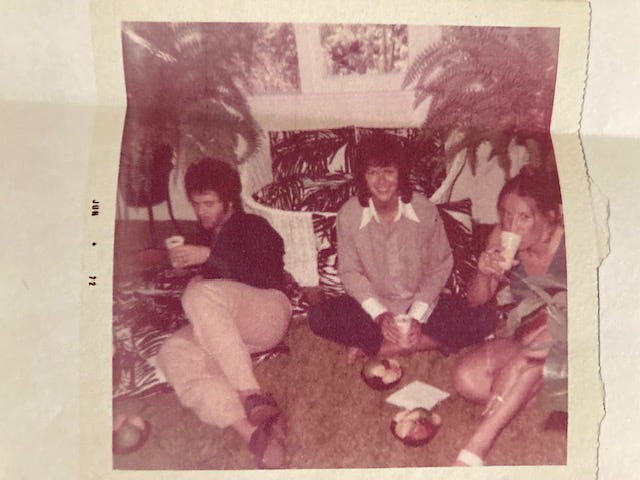
Early on, Tullgren wasn’t aware of Simmons’ desire for fame; as he told me, “Richard was always wanting to be a star. I didn't see that at the beginning when we were working together.” Over time, Terrence realized just how obsessed with fame and famous people Richard was. Only once Terrence started bringing Richard along to Ron Fletcher's, did Terrence begin to see “how obsessed he was with celebrities and stars.” Tullgren told me how Simmons was “obsessed with Barbra Streisand.” They found out where she lived and drove up there with an outfit from Plain Jane—“At 22 or 23, who cares? Just knock on the door and maybe she'll come to the door.” The maid answered, and Terrence later received a beautiful thank you note from Barbra; “She said, ‘I love the outfit, the top is great. If I lose a few inches, the bottom will work too. Thank you so much.’ That was huge.”
Richard’s eccentricities were becoming less funny to work with. Terrence often had to entertain clients and press for Plain Jane and Simpatico, sometimes bringing Richard along. As he told me, “This press agent, Susan Meyer—I used to pay her $1,000 a month, not that she did much. She took us to a dinner and there was the editor of Vogue and Town & Country, and I don't know who else. Richard went on and made a scene and I thought, ‘Oh my God, I will never get press again. This is going to be the end of Simpatico.’ He was out of control. He was just crazy at that point.” With Simpatico losing money and Richard doing little to help the business, Terence took the design part of the business over—they no longer worked together. He recalls, “Now that Richard was working at Derrick's restaurant, he was also trying to connect with people to back him in a fitness studio. Eventually, he did and opened up Anatomy Asylum, and he was savvy enough to develop his own vision of a unique exercise routine.” While Terrence continued designing jewelry and working for Plain Jane, he would attend Richard’s classes whenever he could.
After leaving the garment industry, Tullgren ended up in Brazil, working as a model and actor. During his time there, he first became involved in exporting gemstones and later in interior design: “I created the first or the only jewel-illuminated bed in the world because I wanted to use gemstones in furniture. I started doing furniture. Where there's tufting, I would put gemstones.” By the time he settled in Miami in the 1980s, Terrence had lost touch with Richard—though he wrote to him occasionally, he never received a response. In 1991, they reconnected for a visit when Richard was in town, about to set sail on one of his themed cruises. Tullgren has continued to work on homes, as well as writing a series of books for autistic children.
In December of 2023, Tullgren received a surprise call: “Someone called me and asked me if I was at the same address, and I told her I had moved. She said she wanted to send me something, and I asked who it was, because my phone said no call ID, and she said, ‘Oh, you'll find out tomorrow.’ The next day, I came home to five boxes of the most glorious flowers, each with their own vase, and the same note in each box. The note read, ‘I think of you often and keep you in my prayers every night. You helped me become successful. Thank you. Love, Richard.’” Again, Terrence wrote to thank him, without receiving a reply.
This spring, when Terrence found out that Richard had basal cell cancer, which he had fought too, he sent him a picture of a wound on his back and wished him a speedy recovery. That May, Richard called him; “He said, ‘How are you? Are you okay? Is there anything I can do for you?’ I said, ‘I can't believe it's you after all these years.’ We spoke about many topics. I asked if he was still exercising every day like me, and he said, ‘I'm walking a lot.’ I asked what else he was doing, and he said, ‘Well, I answer every email. I still speak to overweight people for hours a day.’ I told him I couldn't believe he was still up to doing that and not completely burnt out from a lifetime of nonstop selflessly helping people. I said, ‘Look, we both ended up writing books, you on cooking and fitness, and me on character building and coloring books for children.’ He said, ‘Promise you'll keep in touch.’ I said, ‘Of course, but I don't have your new phone number.’ He said email was better for him. In true Richard Simmons style, the next day I received two dozen roses, an edible fruit floral arrangement, and chocolate-covered food with the note, ‘Love Richard.’”
Richard Simmons passed away two months later, on July 13th, 2024. When I spoke to him, Terrence remarked that he is grateful for his “platonic and business relationship with Richard,” continuing, “I know firsthand his many talents as a brilliant serious actor, incredible artist, designer, chef extraordinaire, prolific writer, powerful motivator, and one of the most selfless and compassionate human beings in the world."
Terrence is the author of the Donnie Learns series of books for children:
Donnie Learns: A colorful way to build character!
Donnie Learns is a series of fresh and inspiring stories about a young boy who learns empowering secrets by watching the behavior of deer in the woods near his home. The books provide a simple way for any child to understand fundamental values. The story is beautifully told in words any child can easily relate to and understand. The pencil-line, retro illustrations by Charles Gibson hearken back to a time of old-fashioned values as they skillfully complement the text and reinforce this important lesson. The cover intentionally features black and white images so that the reader has no preconceived notion of how to color within, thus fostering each child's innate creativity and imagination. The result is a must-own book for any child.
Terrence N. Tuligren is an independent author, designer, producer and artist who resides in Miami, Florida. Tuligren originally wrote his first children's activity book, Donnie Makes New Friends, as a means to address a fundamental issue for children with autism, eye contact. After rigorous testing, he realized the book was relevant to all children. That was the catalyst for creating the DONNIE LEARNS series, a number of coloring books that present essential values and serve as a foundation for character development in children. Tullgren weaves stories that are both touching and impactful for young hearts and minds.
The Creation of Richard Simmons
Months ago, I came across a mention of a Richard Simmons clothing line, the first athleticwear for what we now call “plus size” women, in a 1980s newspaper and marked it as a subject to return to. Once I started doing background research on it, it became clear that first I needed to discuss the early years of his fitness career (and his brief forays int…
Richard Simmons II: Rudi Gernreich & Simpatico
When I first started researching Richard Simmons, I hadn’t expected that—pre-exercise, pre-fame—he had designed a line of jewelry successful enough to be profiled in newspapers and used by Rudi Gernreich. Whether due to faulty memory or for other reasons, Richard rewrote when and how this fits into his history.
Richard Simmons III: Interiors for Sweatin'
Picking up from last week’s discussion of Richard Simmons’ early years and his jewelry line, an exploration of his establishments and their décor.
Richard Simmons IV: Plus-Size Activewear
As I mentioned in the first part of my series on Richard Simmons, I became inspired to research him after coming across a mention of his brief mid-80s plus-size clothing collection. Below is an exploration of his several attempts to get into apparel.







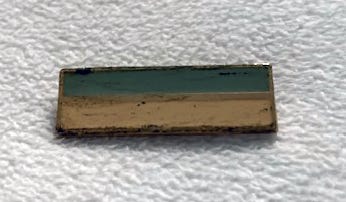
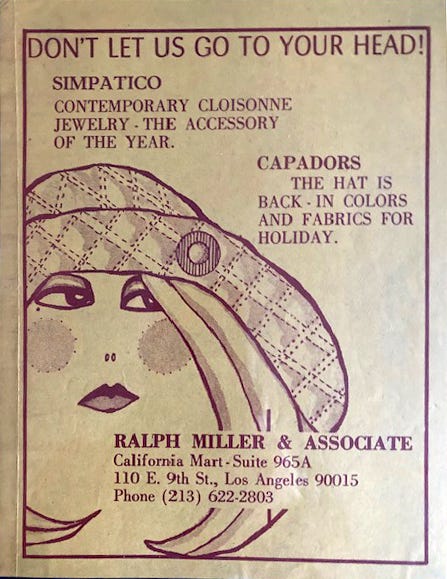
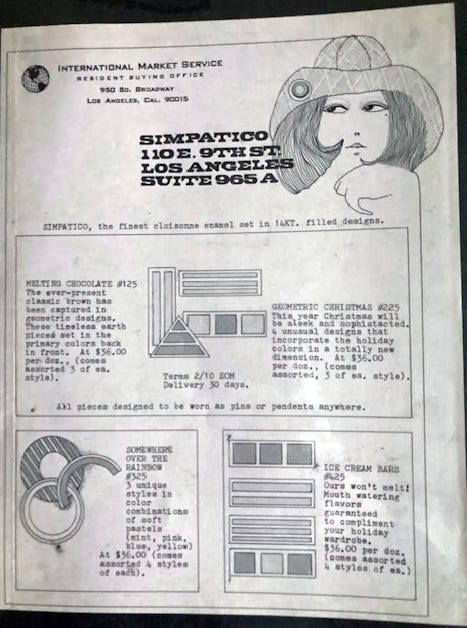
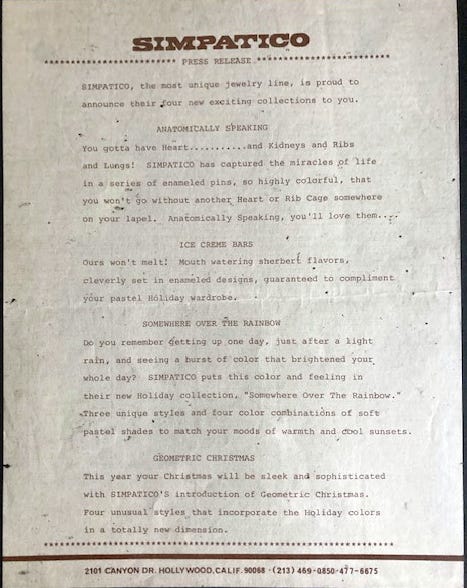
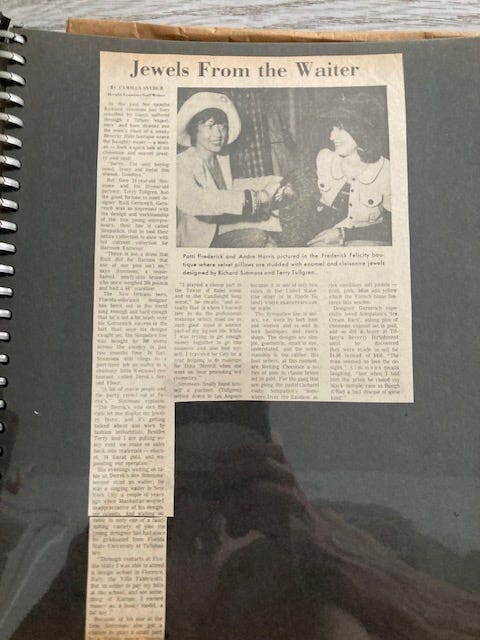
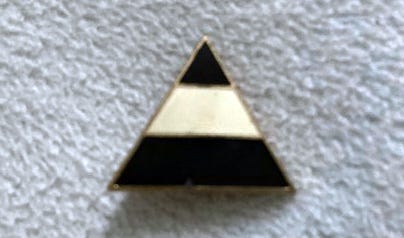


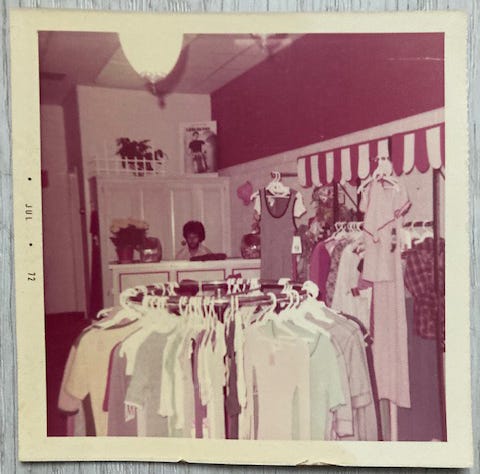
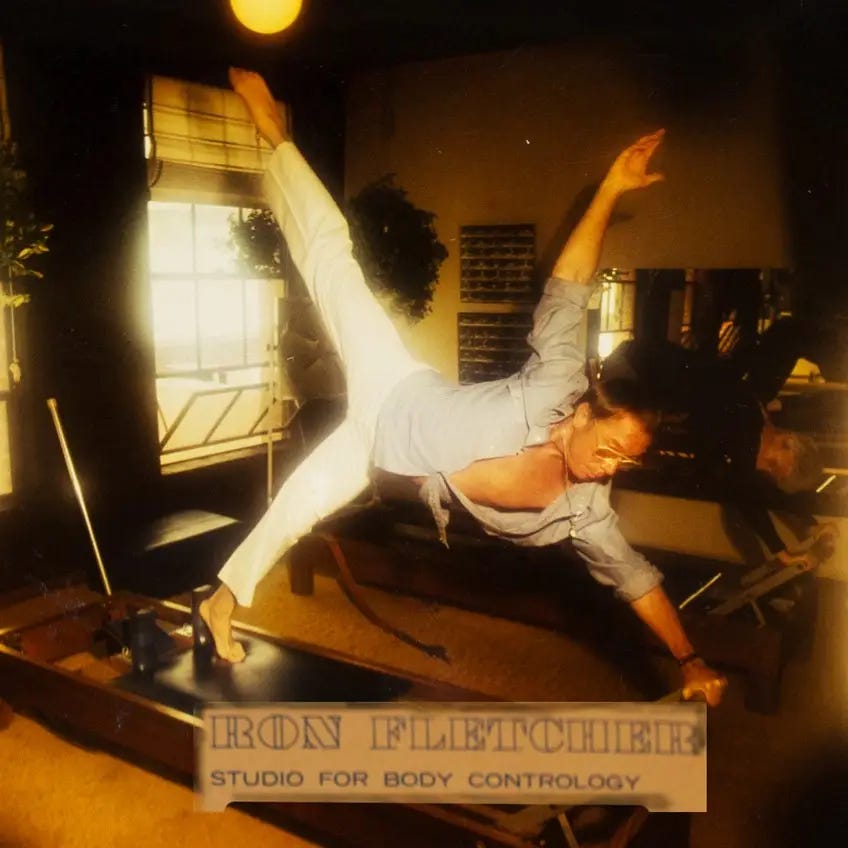


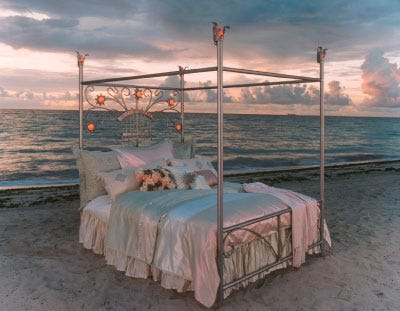

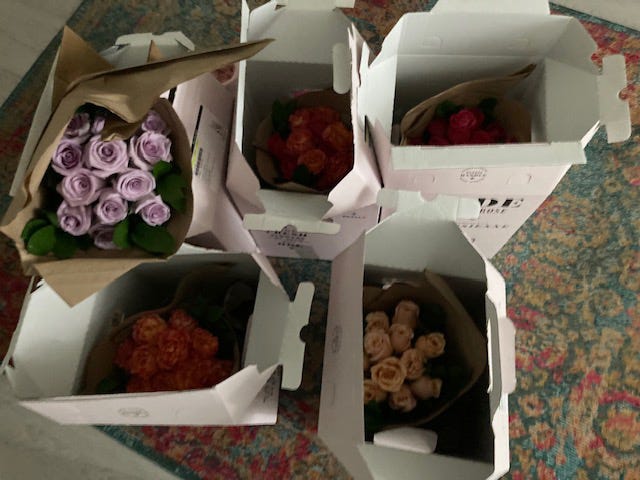



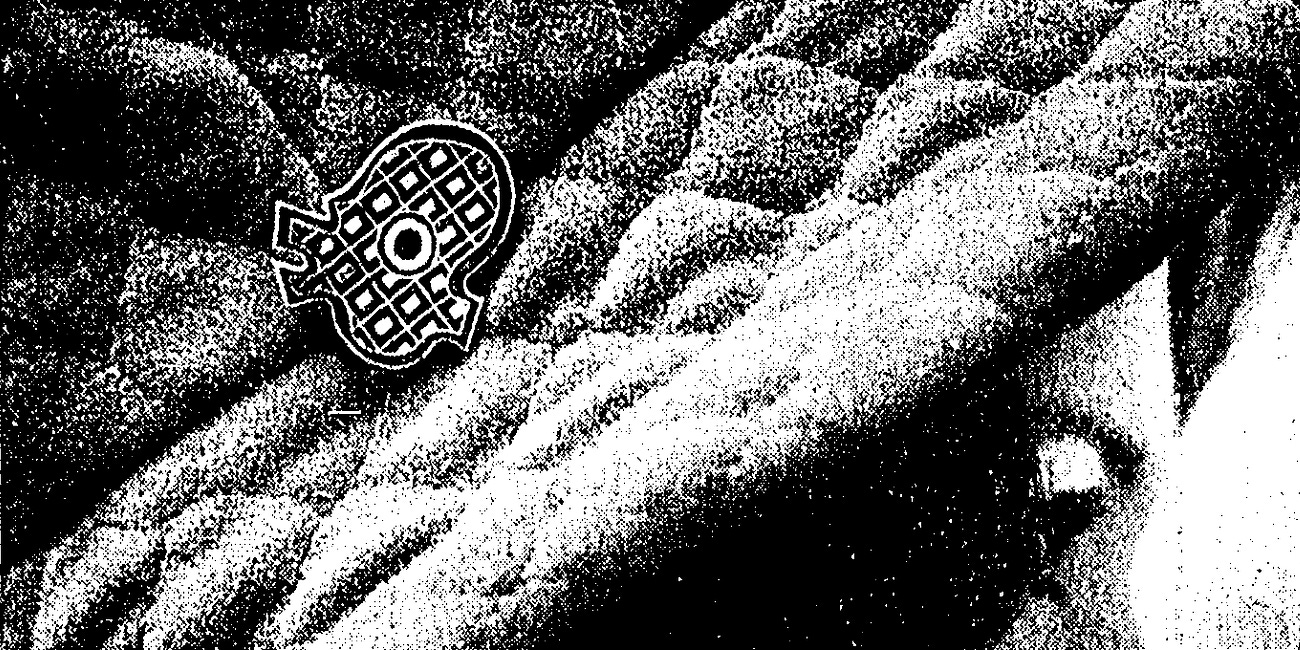
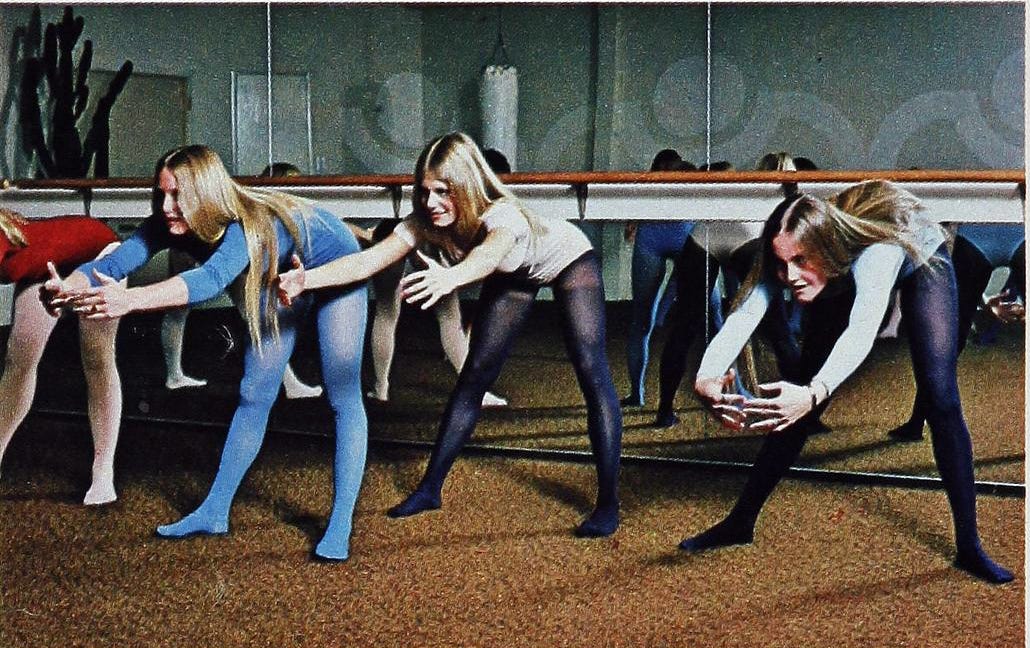

What a pleasure to read! So happy he contacted you.
Amazing! Love knowing the origins of the Esprit brand, and those pins are fabulous!